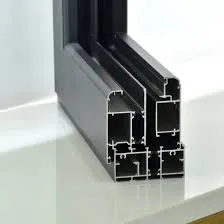Exploring the Unique Characteristics and Applications of Iron in Modern Technology and Industry
Understanding Iron Properties A Key Element in Material Science
Iron is one of the most abundant metals found on Earth, and it possesses a range of properties that make it immensely valuable in industry and everyday applications. From construction to the manufacturing of tools and machinery, iron's unique characteristics play a crucial role in its effectiveness and usability. In this article, we will explore the significant properties of iron, including its physical, chemical, and mechanical attributes, which contribute to its widespread use.
Physical Properties
Iron is a metal characterized by its lustrous appearance and silvery-gray color. In its pure form, it is relatively soft and malleable, allowing it to be shaped and formed into various objects. One notable physical property of iron is its density, which is about 7.87 g/cm³. This gives iron a substantial weight, making it suitable for applications where strength and stability are paramount.
Iron also exhibits significant magnetic properties, being one of the few materials that is ferromagnetic. This means that it can be magnetized and retain its magnetic properties even after the external magnetic field is removed. This characteristic is crucial in electrical engineering and the manufacturing of various devices, such as transformers and electric motors.
Chemical Properties
Chemically, iron is known for its reactivity, particularly with oxygen and moisture, which leads to corrosion and rusting—a common problem in iron structures. When exposed to oxygen, iron readily forms iron oxide, commonly known as rust (Fe2O3·nH2O). This process can compromise the integrity of iron structures, which is why protective coatings, such as paint or galvanization, are often applied to prevent corrosion.
iron property

Iron also reacts with acids, producing hydrogen gas and iron salts. This reactivity highlights the importance of selecting appropriate alloys or compounds when using iron in chemical applications. For example, stainless steel, an alloy of iron, chromium, and nickel, is engineered to resist corrosion, making it widely used in kitchen appliances and medical instruments.
Mechanical Properties
One of the most significant attributes of iron is its mechanical properties, which include strength, ductility, and toughness. Pure iron has limited strength; however, when alloyed with carbon to form cast iron or steel, its strength is vastly improved. Steel's yield strength can reach up to 250 MPa and beyond, depending on the alloying elements and treatment processes used.
Ductility refers to a material's ability to deform under tensile stress without breaking. Iron can be drawn into wires or bent into shapes, making it versatile for various applications. Moreover, its toughness, which is the ability to absorb energy and plastically deform without fracturing, makes iron an excellent choice for structures that require resilience, such as bridges, buildings, and pipelines.
Conclusion
In summary, iron is a remarkable element with a unique combination of physical, chemical, and mechanical properties that contribute to its widespread use in various industries. Understanding these properties allows engineers and manufacturers to optimize iron's applications, ensure structural integrity, and address challenges such as corrosion. As technology advances, the study of iron and its alloys continues to be a vital area of research in material science, inspiring innovations that improve efficiency and longevity in countless applications. Whether in construction, manufacturing, or everyday tools, iron remains a fundamental material shaping our modern world.
-
Wrought Iron Components: Timeless Elegance and Structural StrengthNewsJul.28,2025
-
Window Hardware Essentials: Rollers, Handles, and Locking SolutionsNewsJul.28,2025
-
Small Agricultural Processing Machines: Corn Threshers, Cassava Chippers, Grain Peelers & Chaff CuttersNewsJul.28,2025
-
Sliding Rollers: Smooth, Silent, and Built to LastNewsJul.28,2025
-
Cast Iron Stoves: Timeless Heating with Modern EfficiencyNewsJul.28,2025
-
Cast Iron Pipe and Fitting: Durable, Fire-Resistant Solutions for Plumbing and DrainageNewsJul.28,2025
-
 Wrought Iron Components: Timeless Elegance and Structural StrengthJul-28-2025Wrought Iron Components: Timeless Elegance and Structural Strength
Wrought Iron Components: Timeless Elegance and Structural StrengthJul-28-2025Wrought Iron Components: Timeless Elegance and Structural Strength -
 Window Hardware Essentials: Rollers, Handles, and Locking SolutionsJul-28-2025Window Hardware Essentials: Rollers, Handles, and Locking Solutions
Window Hardware Essentials: Rollers, Handles, and Locking SolutionsJul-28-2025Window Hardware Essentials: Rollers, Handles, and Locking Solutions -
 Small Agricultural Processing Machines: Corn Threshers, Cassava Chippers, Grain Peelers & Chaff CuttersJul-28-2025Small Agricultural Processing Machines: Corn Threshers, Cassava Chippers, Grain Peelers & Chaff Cutters
Small Agricultural Processing Machines: Corn Threshers, Cassava Chippers, Grain Peelers & Chaff CuttersJul-28-2025Small Agricultural Processing Machines: Corn Threshers, Cassava Chippers, Grain Peelers & Chaff Cutters












